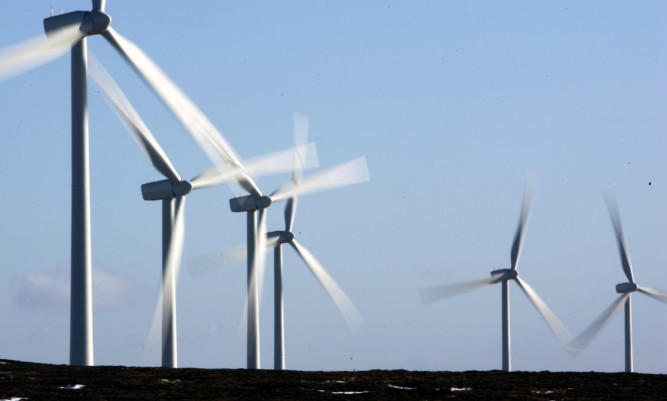The Scottish Government told Angus, Perth and Kinross and Stirling councils to alter planning guidelines to be more positive towards wind turbines.
The Angus authority was told to “pro-actively identify opportunities for onshore wind”, P&K civil servants were “strongly encouraged” to consider producing a “framework for the location of onshore wind technologies” and Stirling was accused of being “negative” about turbines’ visual impact.
Scottish Conservative MSP Murdo Fraser, convener of Holyrood’s energy committee, last night accused ministers of trying to “strong-arm” councils into backing windfarms.
The Mid Scotland and Fife representative said: “The SNP has been attempting to bully councils for some time now in a bid to force them to dance to the windfarm tune.
“Councils know better, and don’t want turbines spread across the whole landscape at the expense of scenery and wildlife.
“Unfortunately, Alex Salmond doesn’t like this, and wants to strong-arm them into accepting even the most unreasonable of planning applications.”
Mr Fraser added: “This has to stop it’s a disgraceful abuse of power, and goes against what communities across Scotland want.
“Rural parts of Perthshire, Angus, Fife and Stirling are already buckling under the strain of speculative windfarm bids. The last thing these areas need is a Scottish Government applying even more pressure from the safety of Edinburgh.”
A Scottish Government spokeswoman said the correspondence which took place between November 2011 and December last year but emerged on Thursday after freedom of information requests did not entirely lobby for windfarms.
She added: “In our letter to Angus Council the Scottish Government is clear that all wind turbines need to be ‘appropriately sited’ and highlights the need to ‘safeguard landscapes’.
“The Scottish Government is currently consulting on a revised approach to how planning authorities should plan for onshore wind developments across Scotland.
“It is a legal requirement for local authorities to consult the Scottish Government on their emerging development plans, and the Scottish Government provides comments when consulted.
“Ultimately it is for local councils to set development plan policies to support the development of wind turbines at locations where impacts on the environment and communities can be satisfactorily addressed.”
An Angus Council spokeswoman said: “The Scottish Government responded to Angus Council’s Main Issues Report consultation … All responses will be taken into account in preparation of our local development plans.”
A spokesman for Perth and Kinross Council said: “The Scottish Government is content that Perth and Kinross Council’s policy on windfarms complies with Scottish Planning Policy, and has raised no objections.
“The document referred to was a pre-consultation draft that was circulated to a number of stakeholders for comment, and no significant change was made to the policy as a result of the comments received.”
The Courier asked Stirling Council for a comment but they had failed to respond by the time of going to press.
